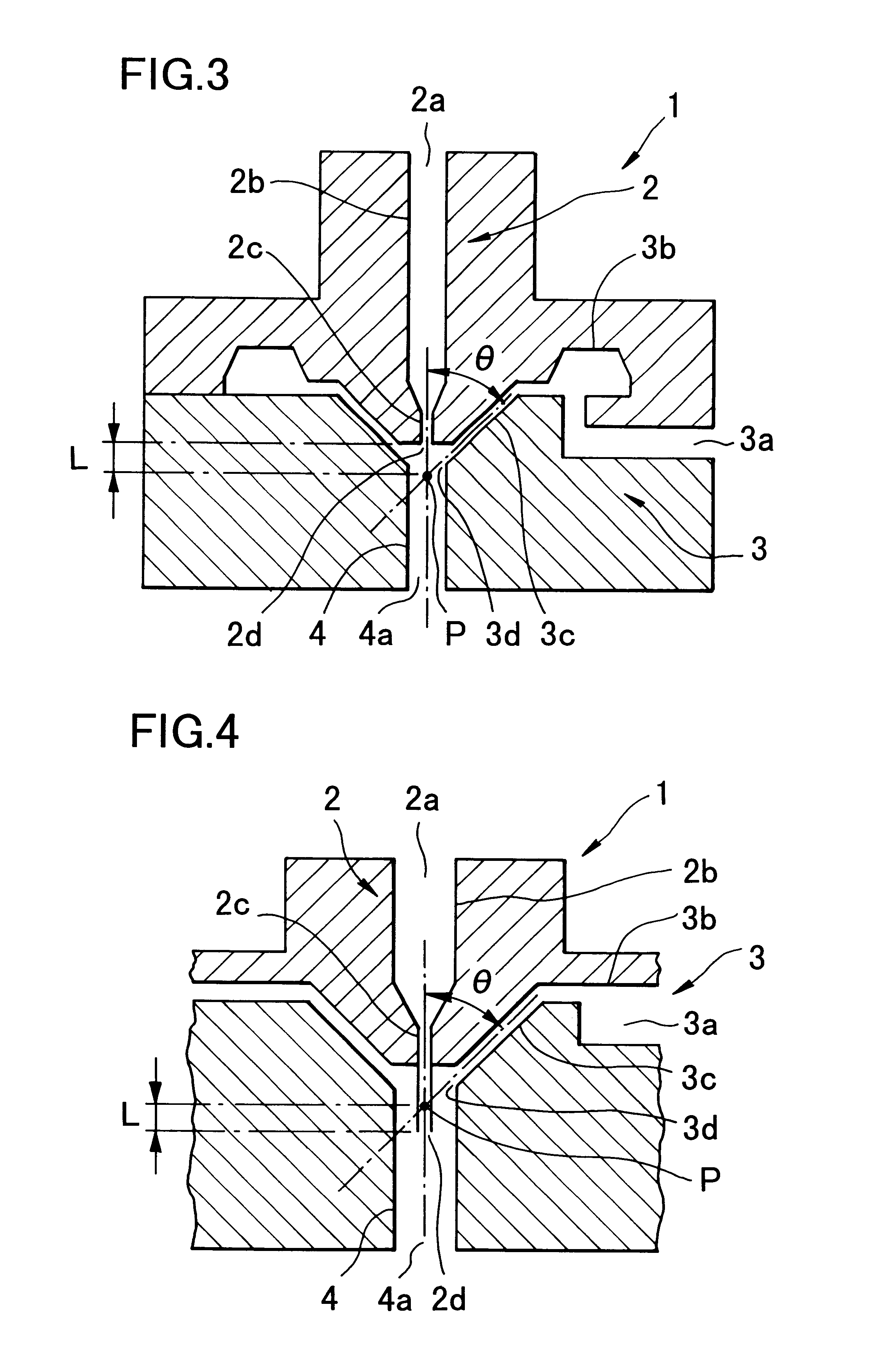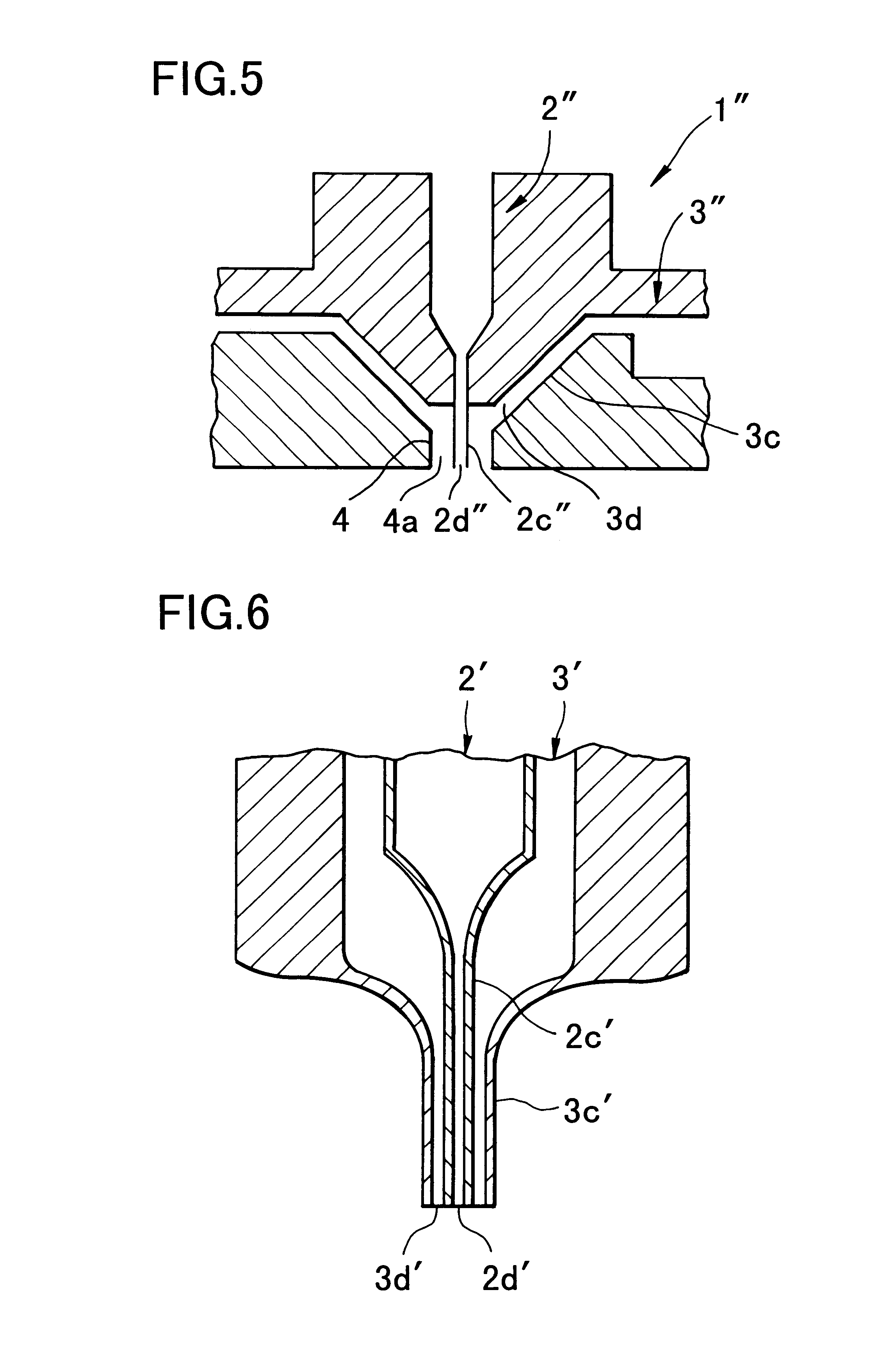Method for manufacturing fibril system fiber
a technology of fibril system fiber and manufacturing method, which is applied in the direction of filament/thread forming, manufacturing tools, lignocellulosic moulding material treatment, etc., can solve the problems of insufficient control of the shape of the fibrillated fiber structure, limited composition of the fibrillated fiber obtained, and inability to achieve industrial advantages
- Summary
- Abstract
- Description
- Claims
- Application Information
AI Technical Summary
Benefits of technology
Problems solved by technology
Method used
Image
Examples
embodiment 7
230 g of cellulose diacetate (MBH, produced by Daicel Chemical Industries Ltd.) was dissolved in 770 g of acetone, and a 23 weight percent cellulose diacetate solution in acetone was prepared.
While maintaining the temperature of the solution obtained at 40.degree. C., the solution was extruded under nitrogen pressurization of 1.5 kg / cm.sup.2, and using a gear pump, a standard amount of the solution was supplied to the nozzle part depicted in FIG. 3, while water vapor was simultaneously supplied. The control of the amount of water vapor supplied was conducted by controlling the supply pressure using a reducing pressure valve. The amount of water vapor was measured by injecting only water vapor from the nozzle shown in FIG. 3 into the coagulating liquid, and obtaining the increase in weight per unit time.
Using a nozzle in which the solution discharge port had a diameter of 0.2 mm.phi., the mixing cell had a diameter of 2 mm.phi. and a length of 1.5 mm and was cylindrical, in which the...
embodiment 8
A 23 weight percent cellulose diacetate solution in acetone was prepared using a method identical to that of embodiment 7. Formation of the cellulose diacetate was conducted using a method identical to that of embodiment 7, with the exception that the discharge rate of the cellulose diacetate solution was changed to 6 ml / min.
A coagulum having a form identical to that of the coagulum obtained in embodiment 7 was obtained, and the specific surface area of the coagulum was 10.5 m.sup.2.
embodiment 9
A 23 weight percent solution of cellulose diacetate in acetone was prepared by a method identical to that of embodiment 7. Formation of the cellulose diacetate was conducted by a method identical to that of embodiment 7, with the exception that extrusion was conducted from the mixing cell output into a coagulating bath comprising a 30 weight percent solution of acetone in water, at a temperature of 30.degree. C., and a coagulum having a specific surface area of 10.0 m.sup.2 / g was obtained.
PUM
| Property | Measurement | Unit |
|---|---|---|
| angle | aaaaa | aaaaa |
| angle | aaaaa | aaaaa |
| pressure | aaaaa | aaaaa |
Abstract
Description
Claims
Application Information
 Login to View More
Login to View More - R&D
- Intellectual Property
- Life Sciences
- Materials
- Tech Scout
- Unparalleled Data Quality
- Higher Quality Content
- 60% Fewer Hallucinations
Browse by: Latest US Patents, China's latest patents, Technical Efficacy Thesaurus, Application Domain, Technology Topic, Popular Technical Reports.
© 2025 PatSnap. All rights reserved.Legal|Privacy policy|Modern Slavery Act Transparency Statement|Sitemap|About US| Contact US: help@patsnap.com



